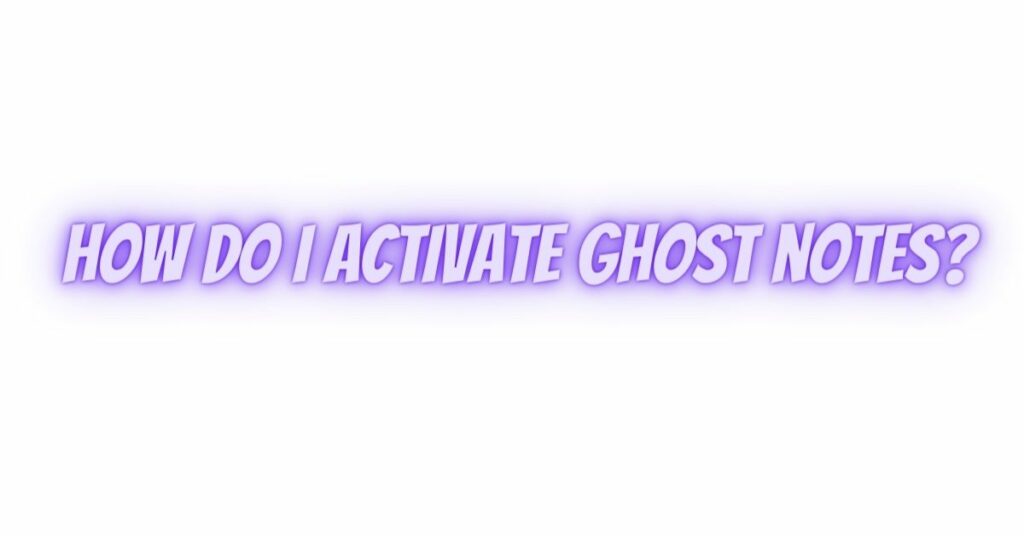Ghost notes, often described as “dead” or “muted” notes, are a fundamental technique in the world of guitar playing. These notes add texture and rhythm to your music, creating a dynamic and groove-filled sound. In this comprehensive guide, we will explore what ghost notes are, how to activate them, and their significance in various guitar styles.
1. What Are Ghost Notes?
Ghost notes are subtle, percussive sounds produced by lightly touching the strings of the guitar without pressing them down to create a pitch. These notes are typically percussive, appearing as muted or “choked” sounds. Ghost notes are prevalent in genres like funk, R&B, jazz, and various styles of rock.
2. Activating Ghost Notes:
To activate ghost notes on the guitar, follow these steps:
- Fretting Hand: First, use your fretting hand to gently touch the strings while they are in their resting position. The aim is to prevent the strings from vibrating freely and producing a clear pitch.
- Picking Hand: Your picking hand plays a crucial role in producing the percussive sound of ghost notes. Instead of picking the strings with full force, you should lightly brush or strike the strings. Use a downstroke or upstroke motion, depending on your preference and the desired sound.
- Mute Properly: Achieving ghost notes requires precision in muting the strings. You should mute the strings not by pressing them down, but by barely touching them to stop them from vibrating.
- Selective Muting: In many cases, you’ll want to selectively mute certain strings while allowing others to ring. This is often done by arching your fretting hand to touch only the strings you want to mute.
- Experiment with Pressure: The pressure you apply with your fretting hand plays a significant role. You should find the right balance to achieve ghost notes—too much pressure may create fully-muted notes, while too little may result in unwanted noise.
3. Ghost Notes in Different Styles:
Ghost notes are prevalent in a variety of musical styles:
- Funk: In funk guitar playing, ghost notes are used extensively to create a rhythmic and percussive groove. They often appear in between the main notes and chords, creating a “chicka” or “chank” sound.
- Blues: In blues guitar, ghost notes can add a layer of depth and complexity to your solos and rhythm playing, contributing to the expressive and emotive qualities of the genre.
- Jazz: Jazz guitarists use ghost notes to articulate complex and syncopated rhythms, adding sophistication to their chord progressions and improvisations.
- Rock: In rock music, especially in funk rock or fusion genres, ghost notes can infuse energy and dynamics into guitar riffs and solos.
- R&B: Ghost notes are vital for creating the groovy and soulful feel in R&B guitar playing. They help in establishing the rhythm and groove of the music.
4. Practice and Precision:
Activating ghost notes effectively requires practice and precision. Spend time experimenting with different pressures, picking techniques, and muting methods to master this expressive technique. It’s essential to practice with a metronome to develop your timing and rhythm.
5. Conclusion:
Ghost notes are a powerful and expressive technique that can elevate your guitar playing in various musical styles. By mastering the art of activating ghost notes, you can add depth, groove, and percussive elements to your music, making your guitar playing more dynamic and engaging. Whether you’re a beginner or an experienced guitarist, ghost notes are a valuable tool to include in your musical arsenal.


